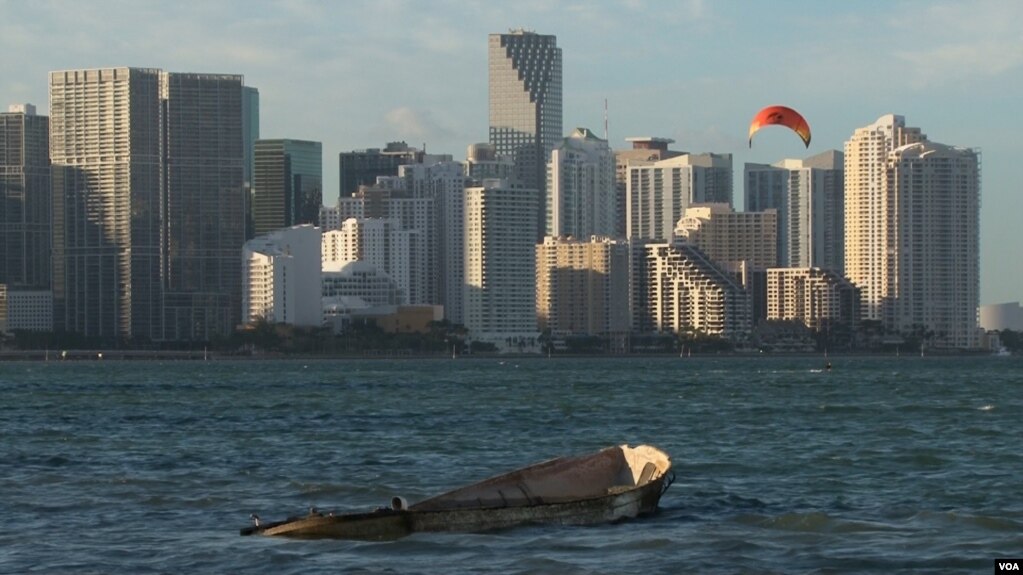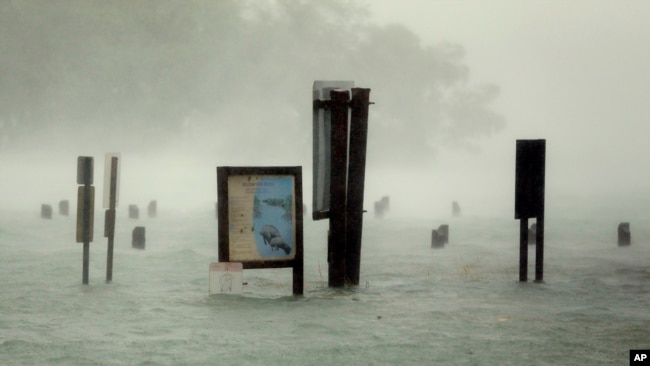 |
| Rising sea levels threaten Miami and coastal cities around the world (SBaragona/VOA) |
Climate change is having a number of effects on cities around the world, including rising sea levels. And, this is an especially big problem for coastal cities. City officials must now prepare for higher tides on their coasts.
The American city of Miami is one of the cities in North America most at risk for rising sea levels. Located in South Florida, Miami is home to nearly 3 million people and billions of dollars in land and buildings. The waterfront is central to Miami's culture and economy. But as the seas rise with climate change, the water will not stay put and large parts of South Florida are in danger of being underwater in the coming years.
Across Biscayne Bay, the City of Miami Beach is making improvements -- raising streets, adding water pumps and more. It is costing the city a lot of money.
Eric Carpenter is the director of public works for Miami Beach. He says local communities will spend 500 million dollars for the improvements.
"Thankfully, our residents, the folks that are footing the bill for this work, realize that the cost of doing nothing is much greater."
City of Miami voters just approved a 200-million dollar project to improve Shorecrest and elsewhere.
And the city has proposed solutions some residents are not happy about. One of the proposals is to redesign whole neighborhoods.
A possibility officials are discussing with residents is for the city to buy homes in some places where flooding is a problem. The city will then turn that land into parks of grassland that could hold the water.
However, that idea is not an immediate fix, says Miami's chief resilience officer, Jane Gilbert.
"It's really much more long-term. And we feel the more we are having those conversations now, the easier it is for everyone to adapt over time."
Over time, the city may need to take bigger risks. Miami's future depends largely on how much, and how fast, the oceans rise.
Caroline Lewis leads the climate activism group, the CLEO Institute. She says cities cannot avoid the need to move inland. "We're going to have to leave sooner or later. However, a well-planned withdrawal should include measures to keep people safely in place for as long as possible."
Miami Beach public works director Eric Carpenter says solutions will depend on the willingness of city leaders to deal with the fear of change and find ways to pay for improvements.
"There's an engineering solution to every problem."
That may be a question South Florida and the world's coastal cities will be asking for many years to come.


